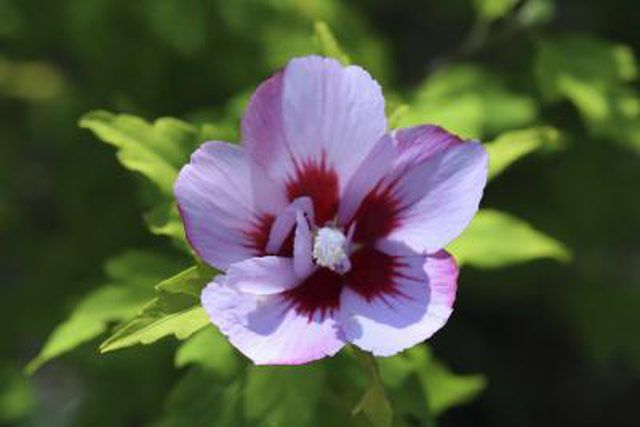Bulbs
Flower Basics
Flower Beds & Specialty Gardens
Flower Garden
Garden Furniture
Garden Gnomes
Garden Seeds
Garden Sheds
Garden Statues
Garden Tools & Supplies
Gardening Basics
Green & Organic
Groundcovers & Vines
Growing Annuals
Growing Basil
Growing Beans
Growing Berries
Growing Blueberries
Growing Cactus
Growing Corn
Growing Cotton
Growing Edibles
Growing Flowers
Growing Garlic
Growing Grapes
Growing Grass
Growing Herbs
Growing Jasmine
Growing Mint
Growing Mushrooms
Orchids
Growing Peanuts
Growing Perennials
Growing Plants
Growing Rosemary
Growing Roses
Growing Strawberries
Growing Sunflowers
Growing Thyme
Growing Tomatoes
Growing Tulips
Growing Vegetables
Herb Basics
Herb Garden
Indoor Growing
Landscaping Basics
Landscaping Patios
Landscaping Plants
Landscaping Shrubs
Landscaping Trees
Landscaping Walks & Pathways
Lawn Basics
Lawn Maintenance
Lawn Mowers
Lawn Ornaments
Lawn Planting
Lawn Tools
Outdoor Growing
Overall Landscape Planning
Pests, Weeds & Problems
Plant Basics
Rock Garden
Rose Garden
Shrubs
Soil
Specialty Gardens
Trees
Vegetable Garden
Yard Maintenance
Rose of Sharon Tree Facts
Rose of Sharon Tree Facts. Rose of Sharon (Hibiscus syriacus), also known as hardy hibiscus, brings a welcome burst of color to heat-fatigued summer gardens with red-throated, trumpet-shaped flowers against pale green foliage. Growing naturally as a dense, vase-shaped shrub, rose of Sharon also lends itself to training as a tree. Use the 8- to...

Rose of Sharon (Hibiscus syriacus), also known as hardy hibiscus, brings a welcome burst of color to heat-fatigued summer gardens with red-throated, trumpet-shaped flowers against pale green foliage. Growing naturally as a dense, vase-shaped shrub, rose of Sharon also lends itself to training as a tree. Use the 8- to 10-foot plant as a single specimen or in shrub borders and hedges. With annual pruning, it also works as a foundation plant.
Preferred Habitats
Rose of Sharon grows wild the mountain forests of India and China, where it thrives in full sun to partial shade and humus-rich, well-draining soil. It grows in U.S. Department of Agriculture plant hardiness zones 5b through 9a, depending on the cultivar, where it handles nearly any soil except a consistently wet one. Tolerance of salt spray and drought make it a good choice for seaside or water-wise gardens. Regardless of where you grow it, expect its numerous seedlings to invade the garden and points beyond.
Caring for Rose of Sharon
Adequate water, annual feeding and spring pruning keep rose of Sharon at its long-blooming best. Whenever summer rainfall dips below 1 inch per week, make up the difference by watering at the rate of 6 gallons per 9 square feet of soil. A deep, slow watering is best. In spring, spread a 2-inch layer of organic compost 4 inches from the trunk to the drip line, where rain falls from the outermost branch tips. Pruning the branches back to two or three leaf buds before the foliage emerges in spring encourages side branching and heavier flowering. Remove diseased or crossing branches at any time. Use clean, sharp pruning tools disinfected between cuts in a solution of 1 part household bleach to 9 parts water.
Bud Drop
Without watering during dry periods, rose of Sharon conserves energy and moisture by dropping its buds. If a well-watered plant begins shedding buds, tiny sap-sucking aphids may be responsible. Look for masses of the insects feeding on the stems and undersides of the leaves. To eliminate the bugs, spray the tree with ready-to-use insecticidal soap until all its surfaces drip. The soap suffocates the pests it reaches, without leaving residue harmful to pollinators or other beneficial insects. Reapply weekly, or at the manufacturer's recommended frequency, until they're gone. Wear washable, protective clothing, safety goggles and a respiratory mask and follow the label's instructions when applying the soap.
Stopping the Space Invader
Removing rose of Sharon’s spent flowers so they don't set seed is a somewhat effective -- although time-consuming -- way to control its spread. A more effective one is to plant a noninvasive cultivar from the U.S. National Arboretum collection. As sterile triploids, "Diana" (Hibiscus syriacus "Diana") and "Minerva" (Hibiscus syriacus "Minerva") seldom produce seed pods. "Diana" features ruffled, red-throated white blooms against glossy, deep green leaves. "Minerva"' has 4- to 5-inch, red-centered lavender blooms. Both grow in USDA zones 5 through 8.